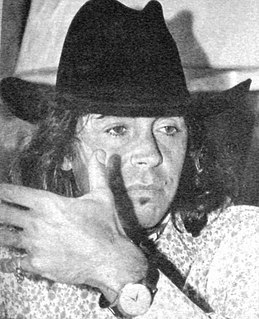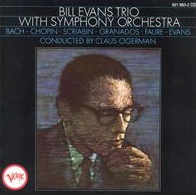Grady Watts (June 30, 1908, Texarkana, Texas - January 1986, Florida) [1] was an American jazz trumpeter and composer.

Texarkana is a city in Bowie County, Texas, United States, located in the Ark-La-Tex region. Located approximately 180 miles (290 km) from Dallas, Texarkana is a twin city with neighboring Texarkana, Arkansas. The population of the Texas city was 37,679 at the 2016 census estimate. The city and its Arkansas counterpart form the core of the Texarkana Metropolitan Statistical Area, encompassing all of Bowie County, Texas, and Miller County, Arkansas. The two cities had a combined population of 67,592 at the 2017 census, and the metropolitan area had a total population of 150,098.
Jazz is a music genre that originated in the African-American communities of New Orleans, United States. It originated in the late 19th and early 20th centuries, and developed from roots in blues and ragtime. Jazz is seen by many as "America's classical music". Since the 1920s Jazz Age, jazz has become recognized as a major form of musical expression. It then emerged in the form of independent traditional and popular musical styles, all linked by the common bonds of African-American and European-American musical parentage with a performance orientation. Jazz is characterized by swing and blue notes, call and response vocals, polyrhythms and improvisation. Jazz has roots in West African cultural and musical expression, and in African-American music traditions including blues and ragtime, as well as European military band music. Intellectuals around the world have hailed jazz as "one of America's original art forms".
Watts attended the Allen Military Academy and the University of Oklahoma [2] and played in local jazz bands in Louisiana in the late 1920s. [3] In 1931 he joined the Casa Loma Orchestra, where he became a featured soloist and a composer; he recorded copiously with the ensemble and remained with it until 1942. Among his compositions for the Orchestra were "Rhythm Man", "You Ain't Been Livin' Right", "I Remember", and "Touch and Go". [2] In the mid-1940s he abandoned his full-time career as a performer and took jobs in artist & repertoire and as an executive in the chemical engineering industry. [2] He was living in Vero Beach, Florida at the time of his death. [1]

The University of Oklahoma (OU) is a public research university in Norman, Oklahoma. Founded in 1890, it had existed in Oklahoma Territory near Indian Territory for 17 years before the two became the state of Oklahoma. In Fall 2018 the university had 31,702 students enrolled, most at its main campus in Norman. Employing nearly 3,000 faculty members, the school offers 152 baccalaureate programs, 160 master's programs, 75 doctorate programs, and 20 majors at the first professional level.

The Casa Loma Orchestra was an American dance band active from 1927 to 1963. From 1929 until the rapid multiplication in the number of swing bands from 1935 on, the Casa Loma Orchestra was one of the top North American dance bands. With the decline of the big band business following the end of World War II, it disbanded in 1947. However, from 1957 to 1963, it re-emerged as a recording session band in Hollywood, made up of top-flight studio musicians under the direction of its most notable leader of the past, Glen Gray. The reconstituted band made a limited number appearances live and on television and recorded fifteen LP albums for Capitol Records before Gray died in 1963.

Vero Beach is a city in and the seat of Indian River County, Florida, United States. According to the U.S. Census Bureau's 2010 data, the city had a population of 15,220.













